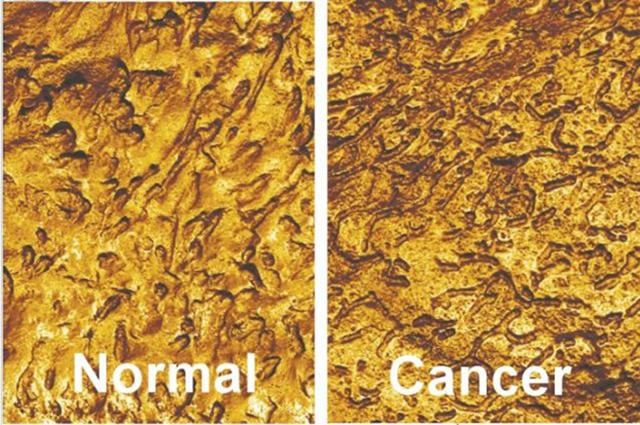A non-invasive method to detect and monitor bladder cancer

With a high rate of recurrence, bladder cancer is both common and among the most expensive cancers per patient to monitor and to treat, due to frequent, costly optical bladder examinations and tumor resections. Although cancer is found in less than 10% of these optical bladder examinations, this test is currently the only clinically approved test. The test is invasive and may have side effects, which is why only 40% of patients comply with these procedures. This low level of compliance adds to the mortality of this cancer.
With that in mind, Professor Igor Sokolov of Tufts School of Engineering and collaborators from the University of Washington and Dartmouth College (Drs. Seigne, Grivas, White, and Lam) saw the clear need for a bladder cancer monitoring test that is highly accurate and noninvasive.
Sokolov, a professor of mechanical engineering and biomedical engineering at Tufts, studies advanced imaging for medical diagnostics, engineering for health, and the mechanics of biomaterials at the nanoscale. He developed a novel modality of atomic force microscopy, which allows researchers to study the distribution of physical properties of the cell surface – information that was not previously obtainable by any other existing technique. Sokolov and Dr. Milos Miljkovic, a former Tufts School of Engineering lab manager, showed that these images could be used to detect of bladder cancer by imaging cells extracted from a patient’s urine. When the images were processed through machine learning analysis, the accuracy of detection reached 94%.
In collaboration with Eugene Demidenko, professor of biomedical data science at Geisel School of Medicine of Dartmouth College (with Drs. Seigne and Lam as co-PIs), Sokolov received a 5-year grant from the National Cancer Institute to further develop the novel bladder cancer detection test that uses ultra-high-resolution atomic force microscopy to image cells from urine samples. Led by Sokolov and Tufts, the cross-university team’s preliminary results indicate that this approach is both feasible and superior to current, even invasive testing methods.
Going forward, the researchers plan to improve the method even further, and assess its accuracy in determining the aggressiveness of bladder cancer. With funding from the National Cancer Institute, the principal federal agency for cancer research in the U.S., the team will study a large cohort of cancer patients to define the accuracy of cancer detection. Sokolov sees an opportunity to lay the groundwork for a new area of bioinformatics and for applications beyond bladder cancer. “This method could potentially detect and monitor other cancers (like cervical, blood, lung, and so on, cancers) in which cells can be extracted from body fluids without the need for invasive biopsies,” he said.
Learn more about this accurate, non-invasive method to detect bladder cancer, and about the Sokolov Research Group.
Research reported in this publication was supported by the National Cancer Institute of the National Institutes of Health under Award Number 1R01CA262147-01. The content is solely the responsibility of the authors and does not necessarily represent the official views of the National Institutes of Health.
Department:
Mechanical Engineering